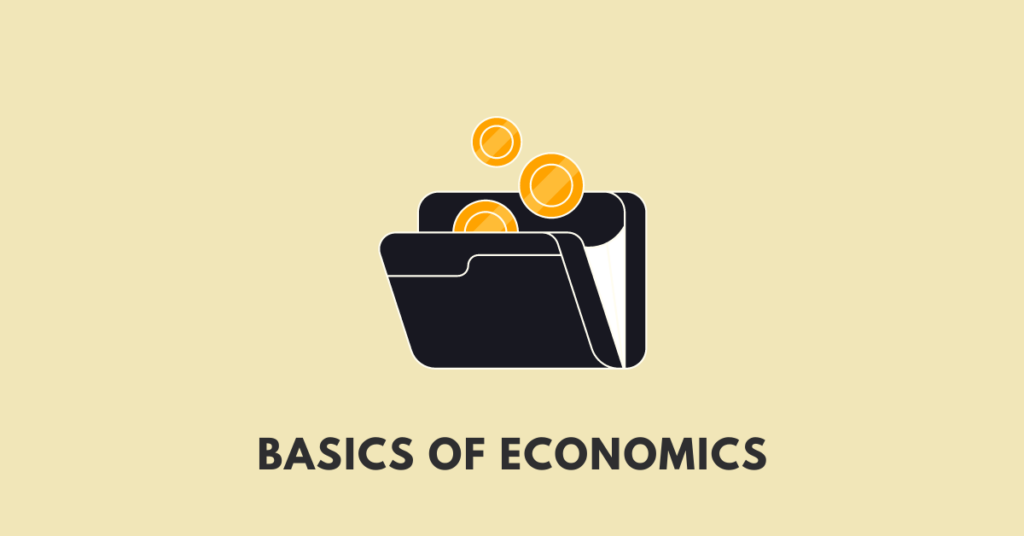
Here, you will find summaries, questions, answers, textbook solutions, pdf, extras, MCQs etc. of (Nagaland Board) NBSE Class 10 Financial Literacy Chapter 5: Basics of Economics. These solutions, however, should be only treated as references and can be modified/changed.
Summary
A persistent rise in prices is called inflation. It refers to an increase in the general level of prices in an economy over a period of time. When the price of one particular product increases, it will not be considered as inflation even though there is an increase in price. If the prices of most goods have gone up, it is known as inflation. When general levels of prices fall over a period of time, it is known as deflation.
In India, inflation is being calculated by using the Wholesale Price Index (WPI). WPI is the index that is used to measure the change in the average price level of goods traded in the wholesale market. The Indian government has taken WPI as an indicator of the rate of inflation in the economy.
There are several reasons why inflation occurs. The general law states that the change in price is due to change in demand and supply of goods and services. However, other reasons causing changes in price are an increase in the supply of money, increase in population, low level of production, increase in salary, increase in the price of oil and raw materials, increase in tax rate for goods and services, expectation of future rise in price, increase in loans given by banks, and the presence of black money.
Inflation can be classified under two main heads: cost-push inflation and demand-pull inflation. The effects of inflation include hindering the economic development of a country due to fewer savings and less investment by people, discouraging investors from investing in a country with high inflation, employees demanding more salary which results in more money supply, people with fixed income being able to buy fewer goods and services than before, and stimulating speculation and hoarding.
The Goods and Services Tax (GST) has revolutionized the Indian taxation system. The GST Act was passed in the Lok Sabha on 29th March 2017 and came into effect from 1st July 2017. GST is a single tax on the supply of goods and services. GST is a comprehensive, multi-stage, destination-based tax that will be levied on every value addition. That means, GST will be levied on value additions at each stage of the production cycle – buying raw materials, processing, manufacturing, warehousing, and sale to customers. The final consumer will thus bear only the GST charged by the last dealer in the supply chain, with set-off benefits at all the previous stages.
There are around 160 countries in the world that have GST in place. GST is a destination-based taxed where the tax is collected by the State where goods are consumed. India has adopted the Dual GST model in which both States and Central levies GST on Goods or Services or both. The Goods and Services Tax will be levied on each of these stages, which makes it a multi-stage tax.
There are four slabs under GST for both goods and services; they are 5%, 12%, 18%, and 28%. In addition, several items face zero levy. Luxury and sin goods that are in the top bracket will also attract a cess that will be used to compensate states for revenue loss.
GST has replaced Central Excise Law, Service Tax Law, VAT, Entry Tax, Octroi, and others. GST aims at eliminating double taxation, cascading, multiplicity of taxes, etc. Earlier the VAT rates used to differ from State to State. GST has brought a uniform tax system.

Textual questions and answers (MCQs)
1. A persistent rise in prices is called ______
Answer: (b) Inflation
2. GST is levied on
Answer: (c) Both a & b.
3. Which of the following Tax was abolished by GST ______
Answer: (a) Service Tax
4. There are around ______ countries in the world that have GST in place.
Answer: (c) 160
5. IGST is charged by ______ Government.
Answer: (b) Central
Extra/additional MCQs
Q.1 A persistent rise in prices is called?
A. Deflation B. Inflation C. Stagflation D. Hyperinflation
Answer: B. Inflation
Q.2 When general levels of prices fall over a period of time, it is known as?
A. Inflation B. Deflation C. Stagflation D. Hyperinflation
Answer: B. Deflation
Q.3 In India, inflation is calculated by using?
A. Consumer Price Index B. Wholesale Price Index C. Retail Price Index D. Producer Price Index
Answer: B. Wholesale Price Index
Q.4 Cost push inflation is caused due to?
A. Increase in demand B. Increase in supply C. Increase in cost of products D. Decrease in cost of products
Answer: C. Increase in cost of products
Q.5 Demand Pull inflation is caused due to?
A. Increase in demand B. Increase in supply C. Decrease in demand D. Decrease in supply
Answer: A. Increase in demand
Q50. The GST levied on footwear costing more than ₹500 falls under which slab?
A. 5% B. 12% C. 18% D. 28%
Answer: C. 18%

Ron’e Dutta is a journalist, teacher, aspiring novelist, and blogger. He manages Online Free Notes and reads Victorian literature. His favourite book is Wuthering Heights by Emily Bronte and he hopes to travel the world. Get in touch with him by sending him a friend request.
Get notes of other boards, classes, and subjects